Which country in the world loves tea the most China, Britain, or Japan?
There is no doubt that China consumes 1.6 billion pounds (about 730 million kilograms) of tea a year, making it the largest tea consumer. However, no matter how rich the resources are, once the word per capita is mentioned, the ranking will have to be re-arranged.
Statistics from the International Tea Committee show that China's annual per capita tea consumption ranks only 19th in the world.
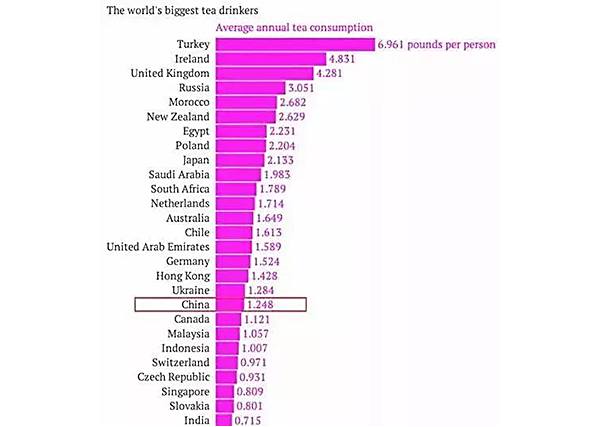
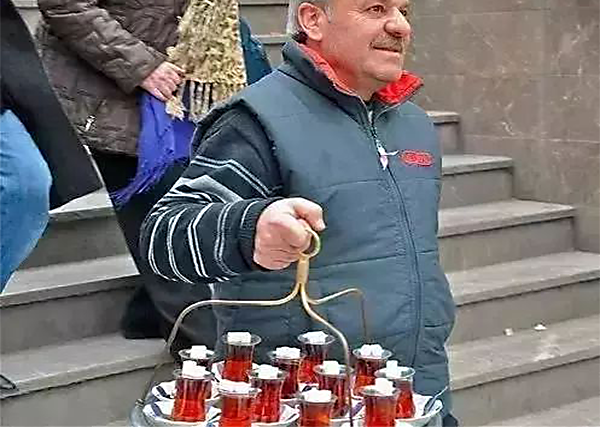
China is not even in the top ten, and the following countries love tea more than China:
Tea 1: Turkey
The world's first per capita tea consumption, with an annual per capita tea consumption of 3.16kg, and an average of 1,250 cups of tea per person per year.
Turkey consumes up to 245 million per day!
"AY! AY! AY! [Cai]" is the Turkish catchphrase, which means "Tea! Tea! Tea!"
"Teahouses" are almost everywhere in Turkey. Whether in big cities or small towns, as long as there are small shops, there are tea cabinets and tea stalls.
If you want to drink tea, just signal the waiter at the nearby teahouse, and they will bring you a delicate tea tray with a cup of hot tea and sugar cubes.
Most of the tea that Turks drink is black tea. But they never add milk to tea. They think that adding milk to tea is a doubt of the quality of tea and is impolite.
They like to add sugar cubes to tea, and some people who like light tea like to add lemon. The slightly sweet sugar cubes and fresh and sour lemons dilute the astringency of tea, making the aftertaste of tea fuller and longer.
Tea 2: Ireland
Statistics from the International Tea Committee show that the annual per capita tea consumption in Ireland is second only to Turkey, at 4.83 pounds per person (about 2.2 kilograms).
Tea is very important in the lives of Irish people. There is a tradition of vigil: when a relative passes away, family and friends have to keep vigil at home until dawn the next day. Overnight, water is always boiled on the stove and hot tea is brewed continuously. In the most difficult times, the Irish are accompanied by tea.
Good Irish tea is often called "a pot of golden tea." In Ireland, people are used to drinking tea three times: morning tea is in the morning, afternoon tea is between 3 and 5 o'clock, and there is also a "high tea" in the evening and at night.
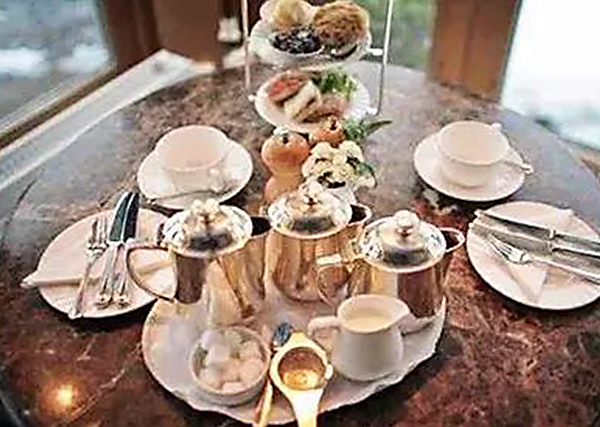
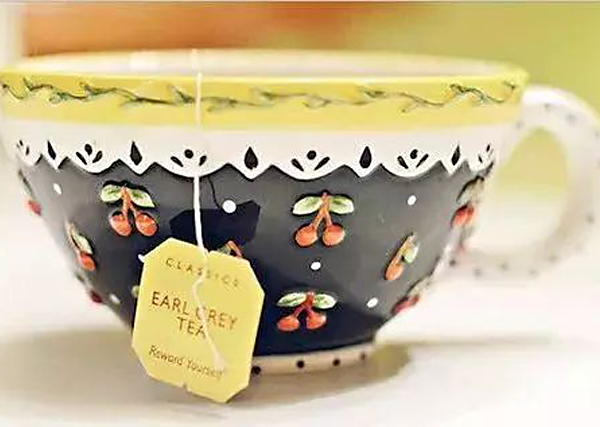
Tea 3: Britain
Although Britain does not produce tea, tea can almost be called the national drink of Britain. Today, the British drink an average of 165 million cups of tea every day (about 2.4 times the consumption of coffee).
Tea is for breakfast, tea after meals, afternoon tea of course, and "tea breaks" between work.
Some people say that to judge whether a person is a real British, just look at whether he/she has a tightly pursed stiff upper lip and whether he/she has an almost fanatical love for black tea.
They most often drink English breakfast black tea and Earl Grey black tea, both of which are blended teas. The latter is based on black tea varieties such as Zhengshan Xiaozhong from Wuyi Mountain in China, and adds citrus spices such as bergamot oil. It is popular for its unique aroma.
Tea 4: Russia
When it comes to Russians’ hobbies, the first thing that comes to mind is that they love drinking. In fact, many people don’t know that compared with drinking, Russians love tea more. It can be said that “you can have a meal without wine, but you can’t have a day without tea”. According to reports, Russians consume 6 times more tea than Americans and 2 times more tea than Chinese every year.
Russians love to drink jam tea. First, brew a pot of strong tea in a teapot, and then add lemon or honey, jam and other ingredients to the cup. In winter, add sweet wine to prevent colds. Tea is accompanied by various cakes, scones, jam, honey and other “tea snacks”.
Russians believe that drinking tea is a great enjoyment in life and an important means of exchanging information and keeping in touch. For this reason, many Russian institutions have “solemnly” set tea time so that everyone can drink tea.
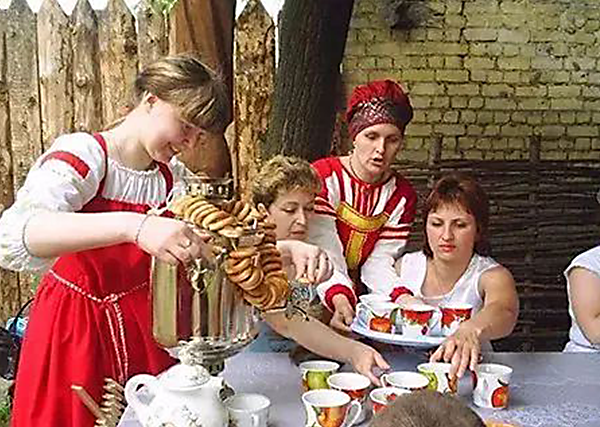
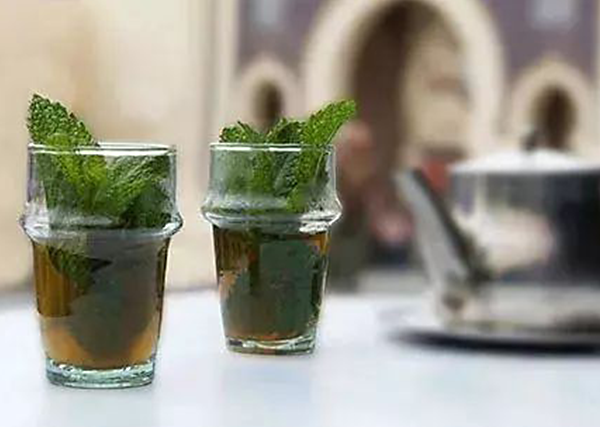
Tea 5: Morocco
Morocco, located in Africa, does not produce tea, but they like to drink tea all over the country. They must drink a cup of tea after getting up in the morning before eating breakfast.
Most of the tea they drink comes from China, and the most popular tea is Chinese green tea.
But the tea that Moroccans drink is not just Chinese green tea. When they make tea, they first boil water, add a handful of tea leaves, sugar and mint leaves, and then put the kettle on the stove to boil. After boiling twice, it can be drunk.
This kind of tea has the mellow fragrance of tea, the sweetness of sugar, and the coolness of mint. It can refresh and relieve summer heat, which is very suitable for Moroccans living in the tropics.
Tea 6: Egypt
Egypt is also an important tea importing country. They like to drink strong and mellow black tea, but they don’t like to add milk to the tea soup, but like to add cane sugar. Sugar tea is the best drink for Egyptians to entertain guests.
The preparation of Egyptian sugar tea is relatively simple. After putting tea leaves into a teacup and brewing it with boiling water, add a lot of sugar to the cup. The proportion is that two-thirds of the volume of sugar should be added to a cup of tea.
Egyptians are also very particular about the utensils for making tea. Generally, they don’t use ceramics, but glassware. The red and thick tea is served in a transparent glass, which looks like agate and is very beautiful.
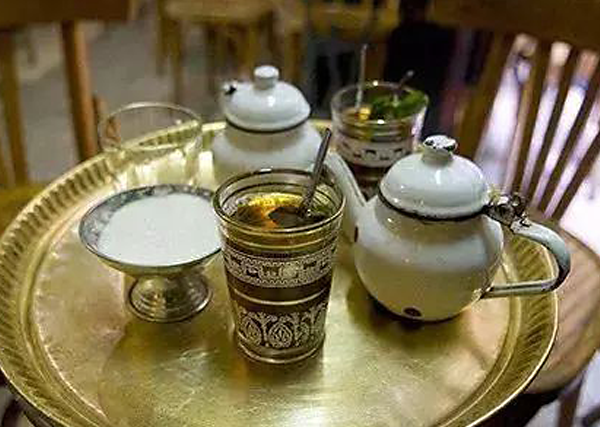
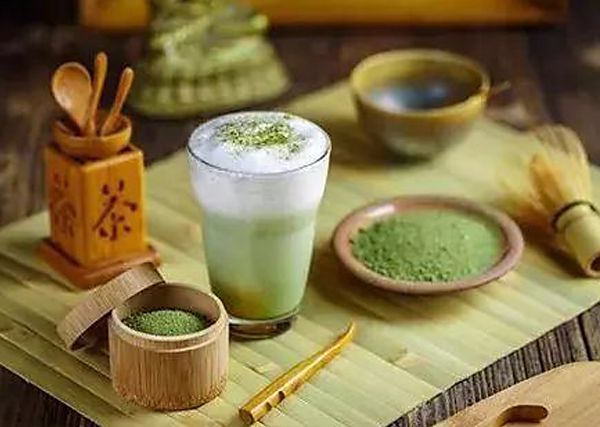
Tea 7: Japan
The Japanese love to drink tea very much, and their enthusiasm is no less than that of the Chinese. The tea ceremony is also widely spread. In China, tea ordering was popular in the Tang and Song dynasties, and tea brewing became popular in the early Ming Dynasty. After Japan introduced it and slightly improved it, it cultivated its own tea ceremony.
The Japanese are more particular about the place to drink tea, and it is usually done in a tea room. After receiving the guests to sit down, the tea master responsible for brewing tea will follow the normal steps to light the charcoal fire, boil water, brew tea or matcha, and then serve it to the guests in turn. According to the regulations, the guests must respectfully receive the tea with both hands, thank them first, then turn the tea bowl three times, taste it lightly, drink it slowly, and return it.
Most Japanese people love to drink steamed green tea or oolong tea, and almost all families are accustomed to a cup of tea after a meal. If you are on a business trip, you will often use canned tea instead.
The tea ceremony culture has a long history. As a Chinese packaging manufacturer, we are thinking about how to display our tea culture? How to promote our tea tasting spirit? How can tea culture enter our lives?
YPAK will discuss this with you next week!
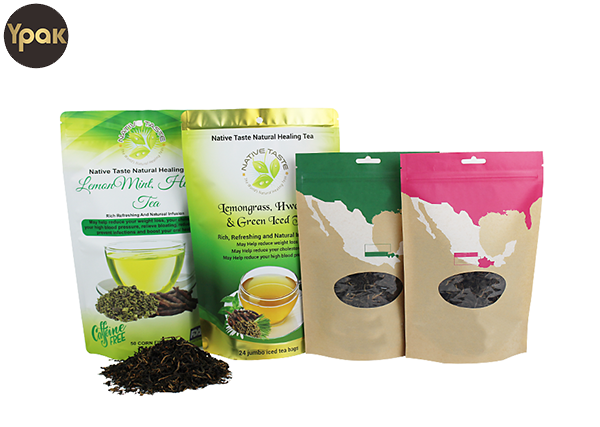
Post time: Jun-07-2024







